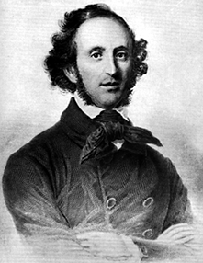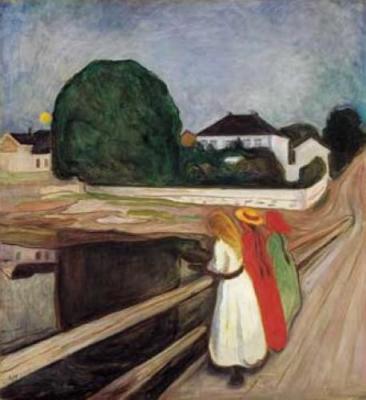

Phantasy Caprices (Chamber Concerto no.2) - dectet - 2009
duration 18 minutes
This work was written quickly (in a month!) by invitation of EMFEB (a flexibnle ensemble for which I had been invited to be a resident composer). It was intended for a mini-festival at the Rosemary Branch Theatre - Big Music for Small Spaces - with a brief to create a response to a Mendelssohn work written in, or for, London. Stretching the point slightly, his piano work Phantasien oder Capricen op.16 was chosen (written in Wales and Surrey, but printed in London, during a break from his 1828 concerts in the capital).

"My stay with the Taylors was one of those events which I shall never lose from memory; it will always be a flowery spot, a kind of oasis, with meadows and wild flowers and murmuring of brooks over the pebbles. We became real friends, I venture to think; at any rate, I acquired a great liking for the young ladies, and I think they liked me, too. We were extremely jolly together, and three of my very best piano pieces I owe to them."
The Mendelssohn piano set was written as a trio of presents for three girls with whose parents he had stayed. Each was inspired by a gift of flowers. It seemed only proper that the same three young ladies' initials ("A", "H" and "S") should provide the titles for my movements. A fragment of each of Mendelssohn's pieces provided a seed, but there was certainly not the intention to imitate his style or to rework his music (alla Stravinsky's Pulcinella etc.). There is a little further cross-referencing between them in the central piece, and one "moment of madness" in the first when a "collision" takes place between a raft of simultaneous quotations (not all Mendelssohnian).
The first movement is initially, richly 'blossoming', but with a building, bubbling movement, and at its climax a vigorous frenzy. The second, a scherzo, attempts to capture the lightness of touch in such movements for which Mendelssohn was famous, though it uses somewhat more kaleidoscopic, fragmentary means to surround a fiery central "trio". The finale is a melancholically contrapuntal, but with warm horn and piano interludes. There is a sonorous climax before it dissolves into a gentle reminiscence. Mendelssohn called his movement The Rivulet and perhaps my movement matches that idea with its own meanderings...
Scoring: flute, oboe, clarinet (A), bassoon, horn, violin, viola, 'cello, double bass, piano
PLEASE READ: THIS IS NOT A PUBLIC DOMAIN WORK. ALL RIGHTS ARE RESERVED. PRINTED COPIES ARE FOR EVALUATION PURPOSES ONLY
flute oboe clarinet bassoon horn
violin viola cello double bass piano
 Computer generated mp3 realisation of Phantasy Caprices
Computer generated mp3 realisation of Phantasy Caprices
1. A ~ Dark - mysterious
2. H ~ Gossamer-like
3. S ~ Murmuring
Live performance below (two movements) by EMFEB Ensemble at the Rosemary Branch Theatre, London as part of the "Big Music in Small Spaces" Festival. For various reasons this recording is not ideal.
2. H ~ Gossamer-like
3. S ~ Murmuring
If you have arrived at this page from a search engine (e.g. Google) and cannot see the menu system, please click here.